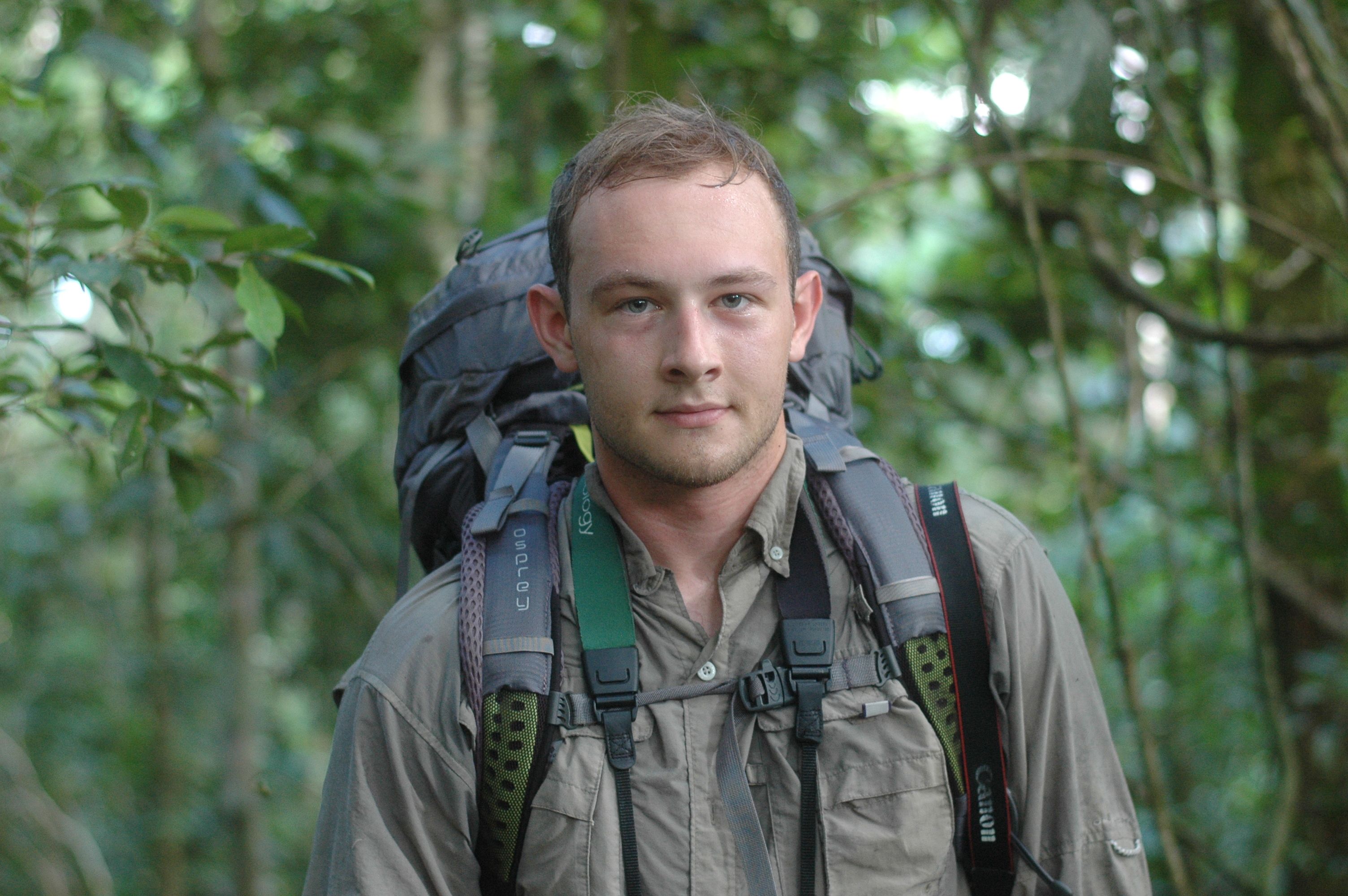At four o'clock in the morning the Cordillera del Pantiacolla is still in the dark. Clouds have enveloped the Andes foothills in southeastern Peru and let their droplets patter on the canopy of the rainforest. After a few minutes' delay, they also hit the clay soil of the mountain ridge, where a cone of light wanders back and forth in the branches. Behind it the shape of a blue poncho. A body sticks underneath. It belongs to Alex Wiebe. The 22-year-old biology student with the stature of a football player and the face of a boy breaks off a palm leaf, one more and one more. He spreads it out on the muddy floor, crouches and rubs his hands together. A low pressure area has reached the southeast of Peru. Wiebe feels miserable. What is he doing here? In the middle of the night, alone, freezing and soaked at 1300 meters of an almost untouched mountain in the middle of nowhere?
He wants to go further up the ridge, but that would have to let up the rain. The prospect of the way back is anything but tempting: On the mud path down, his rubber boots will slip away again and again, and his butt will hit the ground interspersed with roots and stones. He has to resist the impulse to reach for the branches that appear along the path, as these could be wound around by poisonous snakes. On the ground he has to watch out for the 24-hour ants. According to reports, the pain from her sting should feel like being burned on your own body — 24 hours long. It would take him four hours to get down to the river in the valley. From there, a two-hour boat ride separates him from a town, the nearest telephone network is an additional two hours' bus ride away. And the whole risk just to look for something that probably doesn't exist anymore.
It all began with this study, that Wiebe held in his hands for the first time in October 2018 and has not let go of since then: six pages that describe a monstrous discovery, written by his mentor Ben Freeman, who now works at the University of British Columbia in Vancouver, Canada. And by John Fitzpatrick, director of the ornithology laboratory at Cornell University in Ithaca, New York state, or “Lab of O” for short, a cadre of the best ornithologists in the world. Fitzpatrick is an idol for Wiebe, who completed his undergraduate studies there until a few weeks ago. The 68-year-old heralds meetings by holding his hand on his mustache and uttering the call of a barred owl. He was as old as Wiebe today when he first set out for Peru to identify the birds in the Manú National Park, the place where a tenth of all bird species in the world are concentrated. "We owe everything we know about tropical birds in Peru to him and a few of his colleagues," says Wiebe.
Read the full story in German on the Reportagen website.
